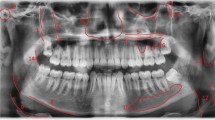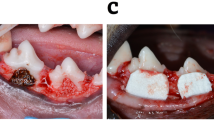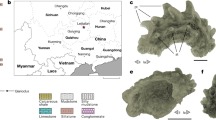Abstract
OUR largest United States lizard, the Heloderma suspectum, is too well known to science to require any special description here. In the Proceedings of the Zoological Society of London, for April 1, 1890, the writer published quite an exhaustive memoir upon the entire morphology of this famous reptile, and among other parts of its anatomy reference was made to its poison apparatus. Fig. 4 of Plate xvi., of the contribution in question, showed a superficial dissection of the under side of the head of a large Heloderm, and upon the left side of the same the submaxillary gland is turned outwards, thus rendering it possible to be seen the four structures leading from (or to) this gland to separate and as many foramina opposite them, which exist upon the external aspect of the ramus of the lower jaw. Heretofore, these four structures have very generally been looked upon as the four poison ducts leading from this gland to the hollow space in the mandible, which latter in turn had its upper outlets in the minute foramina, found one each at the base of the teeth of this jaw. The poison was supposed to pass from the gland through these four ducts into the body of the ramus, then through the above-noted foramina, whence it was conducted into any wound the reptile might inflict with its teeth, along the grooves which have for many years been known to exist upon them. Without making any especial microscopical description, this is practically the view I supported in my memoir in the Proceedings of the Zoological Society, and I added that “Fischer found in his specimen that these ducts branched as they quit the gland; this was not the case in the reptile examined by me. Each duct passes obliquely upwards and inwards through the lower jaw, and its internal opening within the mouth is found at the base of the tooth it supplies, near the termination of the groove of the tooth” (p 207). Dr. Fischer's paper was published in Hamburg in 1882, and in it he also gives a figure showing the ducts I have just mentioned; and he is largely responsible for the view that has been adopted in regard to them As early as 1857, however, John Edward Gray evidently leaned in the same direction, and he speaks of “Heloderma horrida, in which all the teeth are uniformly furnished with a basal cavity and foramen,” —structures which he compared with the poison fangs and associated parts of venomous serpents. Dr. C. K. Hoffmann had the same ideas about the poison apparatus of the Helodermas (Bronn's “Klassen des Thier-Reichs,” Bd. vi., iii. Abth., 30–32 Lief., pp. 890–892), and he republished Fischer's figures; and thus running through the similar views of numerous other leading herpetologists, we find, even as late as 1890, Prof Samuel Garman, of Harvard University, quoting Fischer's description of the poison glands of Heloderma without question (author's reprint from Bull. Essex Inst., vol. xxii., Nos. 4–6, 1890, p. 9), and he adds that “no glands have been found on the upper” jaw. With all this in my mind, I was not a little surprised when Prof. C. Stewart, on January 20 last, in a paper read before the Zoological Society of London, claimed that he believed “that he had shown that in both species [H. horridum and suspectum] the ducts of the gland did not enter the lower jaw, but passed directly to openings situated under a fold of mucous membrane between the lip and the jaw. He thought that the structures previously described as ducts were only the branches of the inferior dental nerve-and blood vessels.” Upon hearing this, I at once took a large specimen of Heloderma suspectum to my friend Dr. E. M. Schaeffer, the well-known microscopist in Washington, D.C., who kindly examined the structures, and found them to be exactly as Prof. Stewart had described. It now remains to be said of what use are the foramina at the base of the teeth in these lizards. Why are the upper teeth grooved when there is no poison gland upon the upper jaw? Would not such a severe bite as a Heloderma is enabled to give kill “frogs and insects,” even were no poison injected into such wounds? Are the grooves on the teeth there to conduct a poison into the wounds inflicted by the teeth of this lizard? Here in America the evidence would seem to be rapidly leading to the demonstration of the now entertained theory that the saliva of this heretofore much-dreaded reptile is possibly almost entirely innocuous. If it be proven, it is unnecessary to add that it leaves the great order Lacertilia, in so far as our present acquaintance goes with it, without a single representative possessed of the power of inflicting a venomous wound by the means of its bite.
This is a preview of subscription content, access via your institution
Access options
Subscribe to this journal
Receive 51 print issues and online access
$199.00 per year
only $3.90 per issue
Buy this article
- Purchase on SpringerLink
- Instant access to full article PDF
Prices may be subject to local taxes which are calculated during checkout
Similar content being viewed by others
Author information
Authors and Affiliations
Rights and permissions
About this article
Cite this article
SHUFELDT, R. The Poison Apparatus of the Heloderma. Nature 43, 514–515 (1891). https://doi.org/10.1038/043514c0
Issue date:
DOI: https://doi.org/10.1038/043514c0



